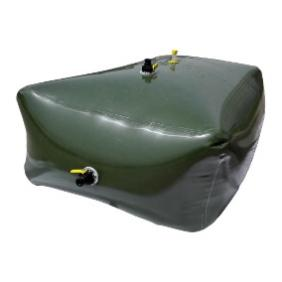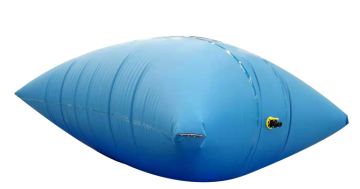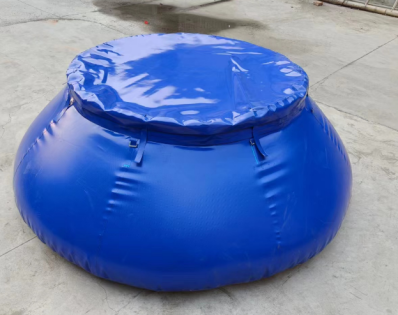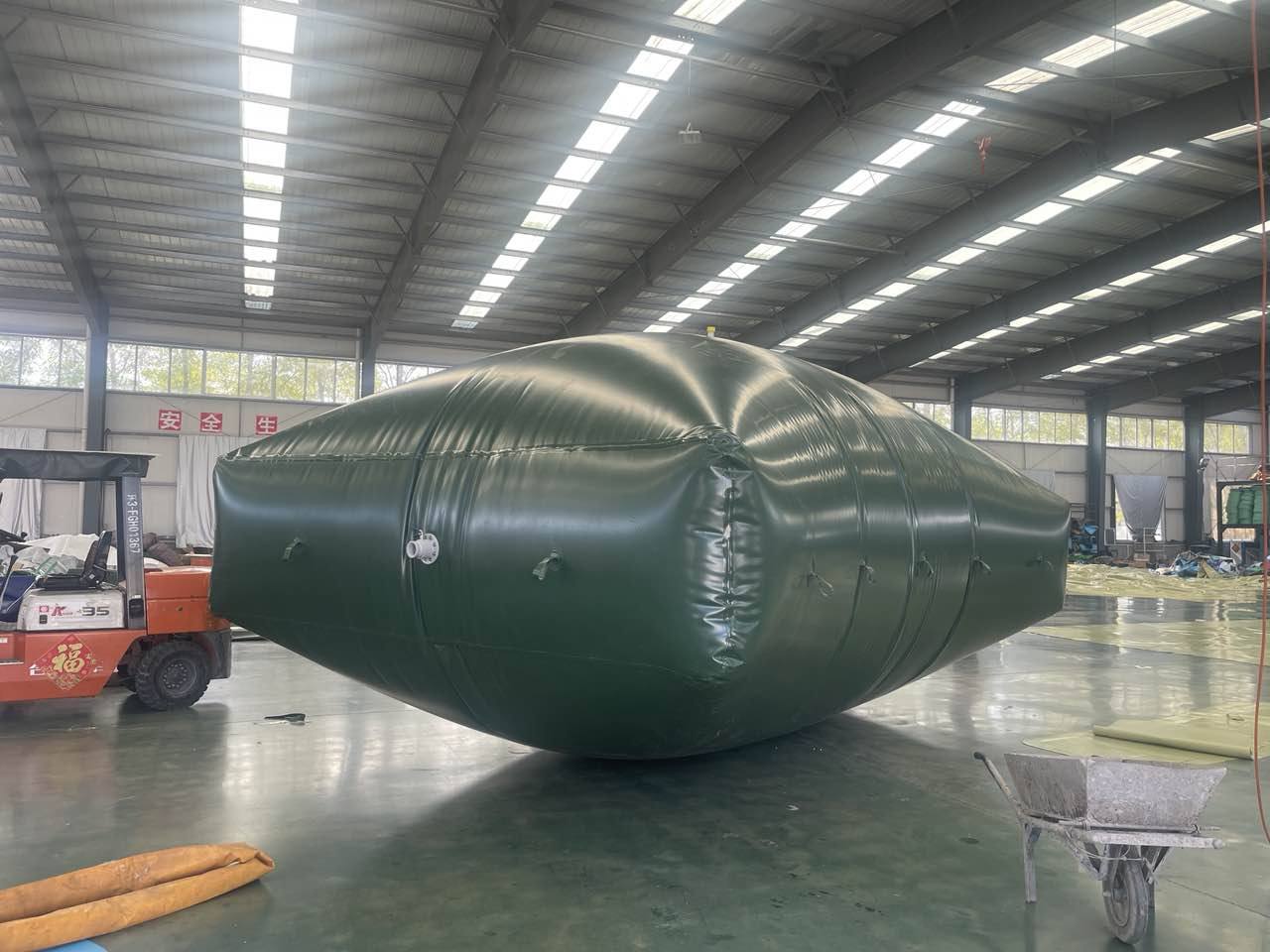Aquaculture one-stop solution provider & liquid storage equipment manufacturer.
Water Storage Containers Trend Report
Shandong Wolize Biotechnology Co., Ltd. designed Water storage containers not only based on functionality alone. The appearance is as important as its usability because people are usually attracted by the appearance first. After years of development, the product not only has the functionality that meets the application needs but also has the appearance that follows the market trend. Being made of durable materials, it also has a relatively long service life for long-lasting performance.
The brand WOLIZE is comprised of a wide variety of products. They receive excellent market feedbacks every year. High customer stickiness is a good showcase, which is proven by high sales volume both at home and abroad. In foreign countries specifically, they are recognized for their great adaptabilities to local conditions. They are excellence regarding the internationalization of 'China Made' products.
Pricing self-discipline is the principle we hold fast to. We have a very strict quotation mechanism which takes into consideration of the actual production cost of different categories of different complexities plus gross profit rate based on strict financial & auditing models. Due to our lean cost control measures during each process, we provide the most competitive quote on WOLIZE for customers.
In industry and daily life, the transportation and storage of liquids are always key links. From chemical raw materials to food and beverages, from industrial oils to agricultural fertilizers, the safe and efficient circulation of various liquids is inseparable from suitable packaging containers. Liquid bags, as an emerging and highly advantageous packaging form, are gradually emerging in the field of liquid packaging.
1. What is a liquid bag?
A liquid bag is a large liquid packaging container made of high-strength, chemically resistant flexible materials. It is usually composed of multiple layers of composite materials, including inner bags, outer bags and related accessories such as valves and joints. The inner bag is in direct contact with the liquid and needs to have good chemical stability and anti-permeability; the outer bag provides additional protection and support to enhance the overall strength and durability of the liquid bag.

2. Uses of liquid bags
Chemical field: Liquid bags are widely used in the transportation of various chemical raw materials, such as acids, alkalis, alcohols, esters, etc. Compared with traditional barrel or canned transportation, liquid bags can greatly reduce transportation costs and improve transportation efficiency. Taking methanol transportation as an example, the use of liquid bags can greatly increase the single transportation volume while reducing the waste of packaging materials.
Food and Beverage Industry: Liquid bags also play an important role in the production and distribution of food and beverages. For example, they are used to transport fruit juice, syrup, cooking oil, etc. Its materials meet food hygiene standards, ensuring the safety and quality of the transported liquids.
Agricultural field: Liquid fertilizers, pesticides, etc. in agricultural production can also be stored and transported with the help of liquid bags. This helps to improve the efficiency of agricultural production and reduce the impact of packaging waste on the environment.

3. Advantages of liquid bags
High cost-effectiveness: Liquid bags have relatively low manufacturing costs and can be folded for storage. They take up very little space when returned empty, reducing transportation and storage costs. At the same time, their large-capacity design reduces the number of packaging times, further saving manpower and material costs.
Environmental protection and energy saving: Liquid bags are mostly disposable, avoiding energy consumption during the cleaning and reuse of traditional packaging containers. Moreover, their materials are recyclable and in line with environmental protection concepts.
Strong flexibility and adaptability: Liquid bags can be customized according to different liquid characteristics and transportation needs, whether in terms of shape, capacity or material selection, to meet a variety of application scenarios.

4. Future Development Trends
With the continuous advancement of science and technology and the increasing requirements for environmental protection, the materials and manufacturing processes of liquid bags will continue to be optimized. In the future, liquid bags may use more environmentally friendly and high-performance materials to further improve their safety and durability. At the same time, the research and development of intelligent liquid bags may also become a trend. Through built-in sensors and other equipment, the temperature, pressure, liquid level and other parameters of the liquid can be monitored in real time to ensure the safety of the transportation and storage process.
As an innovative liquid packaging solution, liquid bags have been widely used in many fields due to their unique advantages. I believe that in the future, it will continue to bring more convenience and innovation to the transportation and storage of liquids and promote the development of related industries.
If you have more specific requirements for the application scenarios and development status of liquid bags, such as wanting to highlight the application of a certain industry, please tell me and I will further improve the content.
Aquaculture, also known as aquaculture, refers to the cultivation of fish or various seafood in artificially opened fish ponds on the shore for consumption. According to the different aquaculture water quality, it can be divided into three categories: freshwater aquaculture, saltwater aquaculture and sea surface aquaculture. Simply put, fish or various seafood are cultivated in artificially opened fish ponds on the shore, and the distribution is most dense in the southwest coast. Since it is aquaculture, the most important thing besides aquatic products is of course water, so Ganzhou Tengyue Canvas Co., Ltd. thinks of a word-water circulation. What is the position of water circulation in aquaculture and fish pond farming? Or what are the benefits of water circulation in aquaculture fish ponds?

One of the factors that has a greater impact on aquaculture products during the breeding process is the water body. It is critical to maintain water quality in aquaculture, so one of the benefits of water circulation is to maintain water quality. Through reasonable planning and design, a system is established to allow water to flow. This process can also remove the sediment of fish pond dirt and reduce bacterial growth. In addition, the nitrification system absorbs and improves the ammonia nitrogen situation in the water, which can also more effectively maintain the aquaculture water quality. Only when the water body is well maintained can it be more beneficial to the survival and growth of aquaculture products. In addition to water quality, the oxygen required for aquaculture can also be solved. The process of water body movement will increase the contact area with air and increase the dissolved oxygen content in the water body, which can also be more conducive to the growth of aquaculture products.

How should a reasonable and appropriate fish pond water cycle be planned? Take the new aquaculture equipment galvanized sheet canvas fish pond as an example. The galvanized sheet canvas fish pond is a new type of artificial aquaculture pool, which is composed of galvanized sheet and fish pond canvas. It has the characteristics of high strength and wear resistance, is not easy to leak and has a long service life. Intensive management is also convenient for feeding. It is also convenient to install a circulating water system in a canvas fish pond, because the installation of a galvanized canvas fish pond is relatively simple, and the choice of installation location is also more flexible. It is also relatively simple to consider the circulating filter pump, aeration pump, water inlet and outlet for water circulation. The galvanized plate opening and the canvas opening are both very simple, and the location is up to you to choose, but you should try to choose a shaded location so that it is not easily polluted, and plan the direction of each pipeline in advance, so that no external pipelines are required later, and it looks more beautiful overall.
Under severe environmental conditions such as disaster relief and drought, people increasingly need a relatively safe and economical container for storing liquids. In this article, we will introduce flexitanks, also known as truck-mounted flexitank transportation. Flexitank storage is a relatively new and effective way of storing liquids.
What is a flexitank?
Flexitanks are soft storage containers for bulk materials such as liquids. Depending on the specific gravity of the liquid, their capacity generally ranges from 50L to 26 tons. Flexitanks have their own advantages compared to other types of liquid storage tanks, such as rigid plastic tanks or steel tanks. First, they offer better capacity and weigh less than other storage tanks. Additionally, when they are emptied, they can be folded up to take up little space. Also, they are safe for the environment and the liquids they store.
Characteristics of flexitank
The variety of technical fabrics available for the manufacture of flexitanks results in a variety of different flexitank categories and specifications. Some flexitanks are for temporary use (such as container flexitanks), while others can hold a liquid for several years at a time, or can be used repeatedly (such as PVC soft water bladders, TPU oil bladders, etc.).
The purpose of flexitank
1. Fuel storage
Flexitanks can be used to store liquid fuels such as gasoline, diesel and oil. In general, flexitanks are most commonly used by military or civilians for fuel storage. Rapid access to fuel may be required during emergencies, so flexitanks may be used in field hospitals, emergency airports, or at natural disaster relief sites.
2. Drinking water storage
Flexitanks are used in various disaster relief and emergency operations around the world. In a ready state, the flexitank takes up minimal space and can be easily transported to the site for use. Besides fuel, drinking water is another liquid that must be readily available. For example, field hospitals, emergency airports, and natural disasters all require potable water storage.
3. Food-grade liquid storage
Flexitanks can safely and effectively store food-grade liquid ingredients such as various types of oils, milk, juices, wines, fructose syrups, etc.
4. Storage of industrial chemicals
Flexitanks are ideal containers for transporting and storing industrial liquid chemicals. These include liquid detergents, lubricants, fertilizers, liquid latex and paints, among others.
5. One-time and temporary storage
In some applications, liquid storage is only needed temporarily, making purchasing a steel or composite rigid tank not a worthwhile investment. This typically occurs during industrial use or during sudden drought situations where liquid storage needs may fluctuate. In this case, using flexitanks can reduce overall storage costs. Additionally, flexitanks can also be used to transport liquids as they can be packed inside shipping containers, allowing for more efficient transport of liquids.
Under severe environmental conditions such as disaster relief and drought, people increasingly need a relatively safe and economical liquid storage container. In this article, we'll cover flexitank storage, also known as truck-mounted flexitank shipping. Fluid bag storage is a relatively new and effective way of storing liquids.
What is a liquid bag?
Flexitank is a soft storage container for bulk materials such as liquids. Depending on the specific gravity of the liquid, they generally have a capacity between 50L and 26 tons. Flexitanks have their own advantages over other types of liquid storage tanks, such as rigid plastic or steel tanks. First, they offer better capacity and weigh less than other storage tanks available. Plus, when they're emptied, they can be folded away to take up little space. Also, they are safe for the environment and the liquids they store.
The characteristics of the liquid bag
The variety of technical fabrics available for the manufacture of flexitanks results in a wide variety of different flexitank categories and sizes. Some flexitanks are temporarily used (such as container flexitanks), while others can hold a liquid for several years at a time, or can be used repeatedly (such as pvc soft water bladders, tpu oil bladders, etc.).
The use of liquid bag
1. Fuel storage
Flexitanks can be used to store liquid fuels such as gasoline, diesel and petroleum. In general, flexitanks are most commonly used by the military or civilians for fuel storage. Rapid access to fuel may be required in emergencies, so flexitanks may be used in field hospitals, emergency airports, or natural disaster relief sites.
2. Drinking water storage
Flexitanks are used in a variety of disaster relief and emergency operations around the world. In the ready state, the flexitank takes up minimal space and can be easily transported to the site for use. Besides fuel, potable water is another fluid that must be readily available. For example, field hospitals, emergency airports, and natural disasters all require potable water storage.
3. Food grade liquid storage
Flexitanks are able to safely and efficiently store food-grade liquid ingredients such as various types of oil, milk, juice, wine, fructose syrup, and more.
4. Storage of Industrial Chemicals
Flexitank is an ideal container for transporting and storing industrial liquid chemicals. These include liquid detergents, lubricants, fertilizers, liquid latex and paints, among others.
5. Disposable and temporary storage
In some applications, liquid storage is only needed temporarily, making purchasing a steel or composite rigid tank not worth the investment. This typically occurs in industrial use or in the event of a sudden drought where liquid storage needs may fluctuate. In this case, the use of flexitanks can reduce overall storage costs. In addition, flexitanks can also be used to transport liquids as they can be packed inside the shipping container for more efficient transport of liquids.
In places such as drought or fire emergency, many people use machine-mounted vehicles to transport water, which makes the safety performance of the modified vehicles worse, and the cost is high, and water is easy to leak during transportation, causing a lot of waste and waste. loss. In order to reduce the cost of phosphorus and lead and increase safety, pvc soft water storage bags came into being.
Features:
The PVC water storage bag is easy to transport, especially suitable for hilly and mountainous areas. The use is less affected by seasonal factors, and it can be folded and stored without trying to reduce the amount of space occupied. The water storage bag has good sealing and corrosion resistance, and has the characteristics of corrosion resistance, acid and alkali resistance.
Instructions:
1. Spread out the water storage bag and put it where it is needed. Be careful not to have sharp things to avoid damage.
2. In order to prevent the water storage bag from rolling, it can be reinforced around the water storage bag when it is placed. It is better that the reinforcement will not scratch or damage the water storage bag.
3. Use a water pump or tap water, connect the water pipe to the water inlet valve of the water storage bag, open the water inlet pipe valve and the exhaust valve switch, and remove the air in the water bag. Start water injection, and after the water bag is full, close the water inlet pipe valve and the exhaust valve.
4. When using a water storage bag, if the bag body is scratched, use a grinding wheel or a wooden file to smooth it out, and apply water to cover it with adhesive tape to repair it. It is best to use the watering repair recommended by the manufacturer.
5. After use, rinse the water storage bag, and after drying, fold it up and place it indoors to avoid sunlight.






